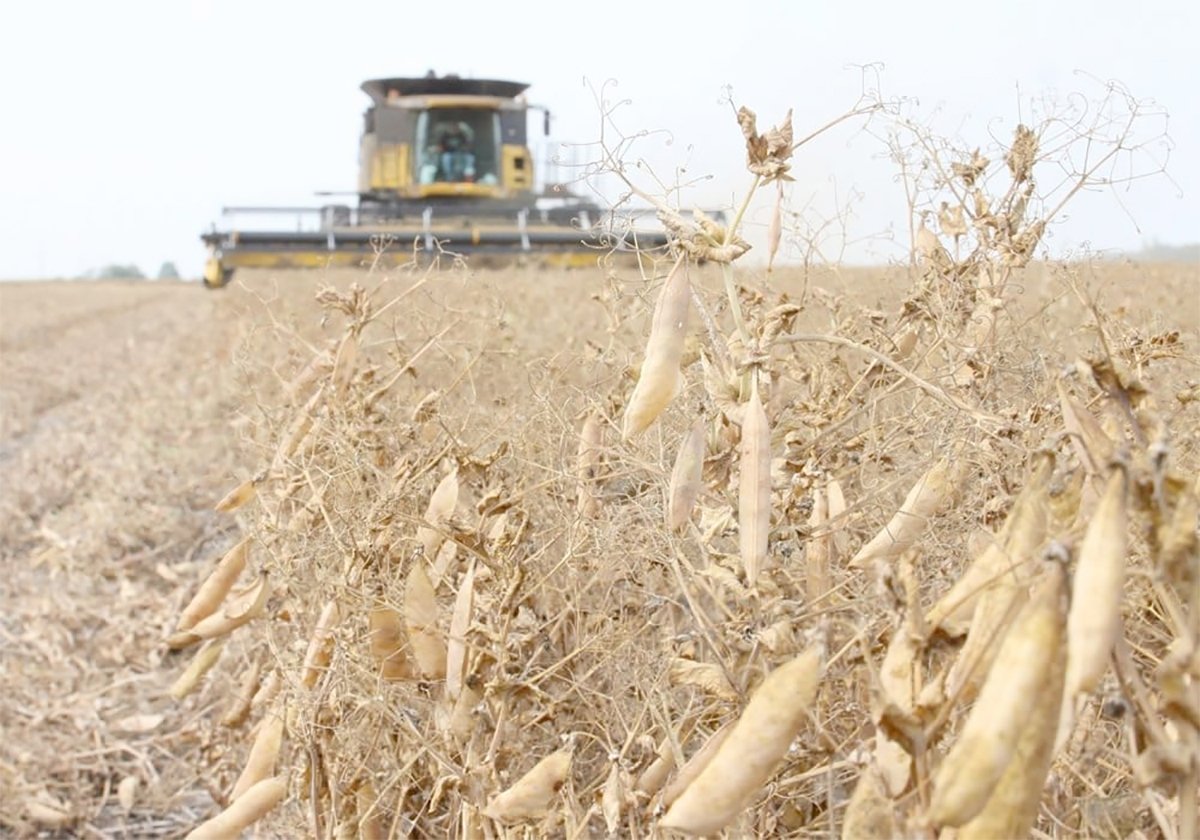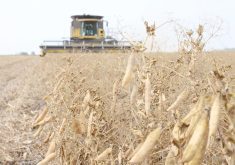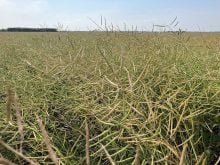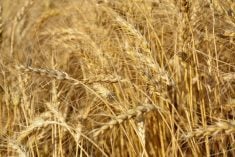EDMONTON – Gelbvieh means yellow cow in German but in North America those types are hard to find these days.
“When they first came, they were yellow and horned. Now they are red and black and polled,” said Scott Severtson, who has been raising Gelbviehs on his ranch near Innisfail, Alta., since the mid 1980s.
This year marks the 35th anniversary of the breed in Canada and producers gathered at Farmfair International in Edmonton to mark the event with a national show.
Severtson first noticed the breed as a student when the Canadian Gelbvieh Association hired him for the summer to take 60 show cattle to 11 summer fairs in Alberta.
Read Also

Chinese, Indian tariffs take toll on pea prices
The disruption of pea exports from Canada’s largest customers will likely result in slow pea exports for the remainder of the crop year.
His family had Black Angus but after a summer of Gelbvieh, he was ready for change.
The Gelbvieh were among the last of the continental cattle imports to arrive from Europe in the early 1970s. By the time Severtson became involved, Canadians had changed the cattle to make them fit local conditions.
That change was obvious when
Severtson judged a cattle show in France last year and witnessed how far apart European and North American types are. Raised under different management conditions, Canadian cattle must be hardy and roam large pastures. The purebreds are also guided more by the needs of the commercial beef business, which prefers solid, meaty cattle.
The North American breed was achieved by mating European Gelbvieh with British cattle, then back to Gelbvieh until the female offspring were 7/8 Gelbvieh and the bulls were 15/16.
In the early breeding programs, producers crossed the continental Gelbvieh with breeds such as Hereford, Angus and Holsteins.
Yet the demand for new cattle was strong because the European types introduced higher growth rates and better milk production.
“You’d see a Holstein and continental cross and it would bring $40,000,” Severtson said.
Once the breeds were established, producers selected purebred cattle for extreme height without enough muscle on their large frames. That has changed because of demands from beef producers who want super cows rather than super models.
“All breeds are closer to the real world now,” said Severtson, who also keeps commercial cattle.
The breeds are more moderate, but it took 35 years to get them where they are, said Vern Pancoast, vice-president of the Canadian association.
Gelbvieh producers form one of the smaller associations, partly because they arrived after other European imports, such as Charolais and Simm-ental, which were supported by large investors.
“No big money was put into them. The cattle did it themselves,” said Pancoast, who joined the breed in the early 1990s.
He was a commercial beef producer who wanted change in his herd.
One year after a particularly bad experience with hyperactive calves, he bought a Gelbvieh bull after seeing the cattle at a show.
The temperament problem cleared up and he gradually switched over to red purebred Gelbviehs on his ranch near Medicine Hat, Alta. He prefers a solid red herd that can survive the hot, dry conditions of southeastern Alberta. So far, he has no complaints.
“In my area that is what sells. My preference is for red and my market is red.”















